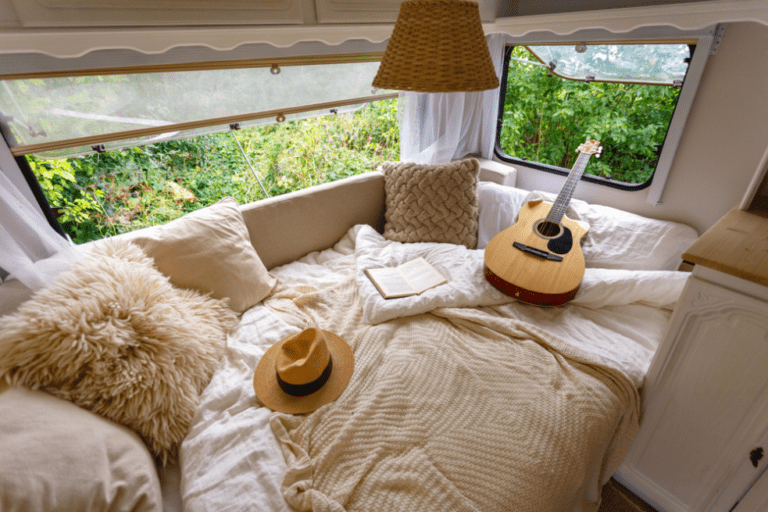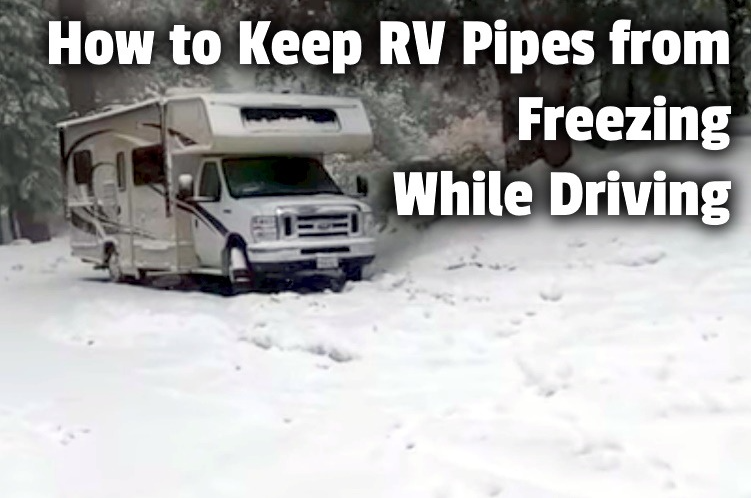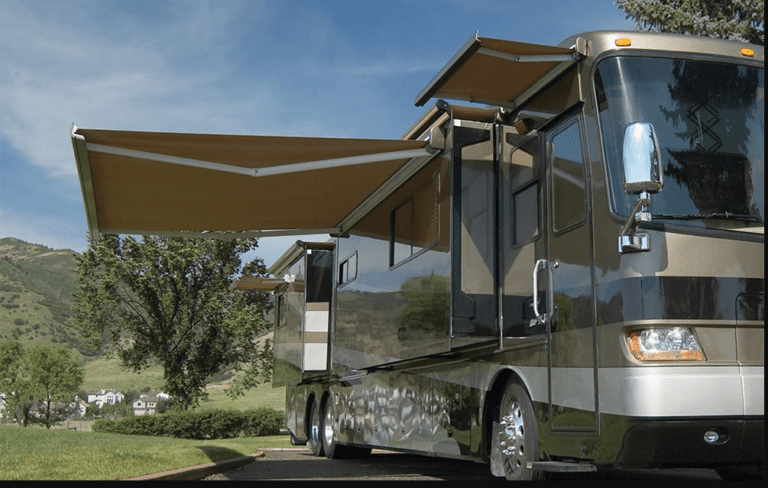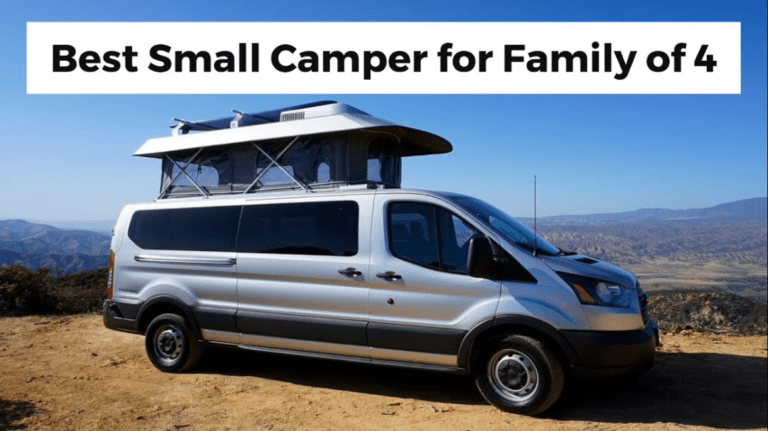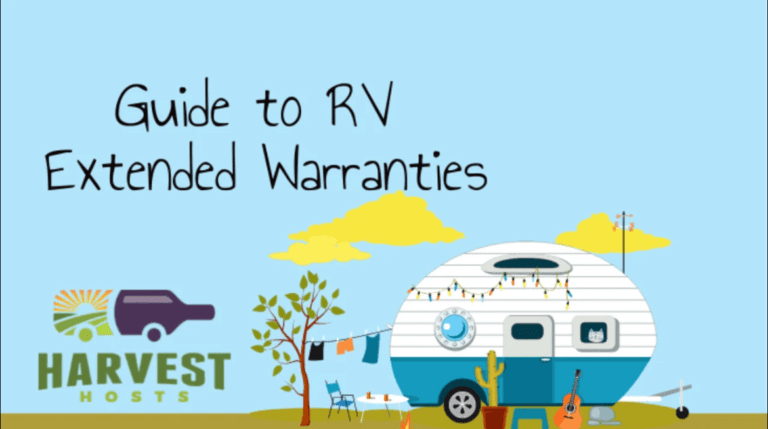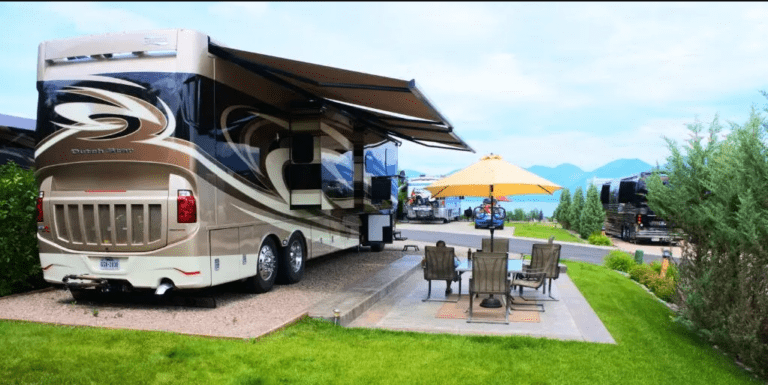How to Start an RV Park
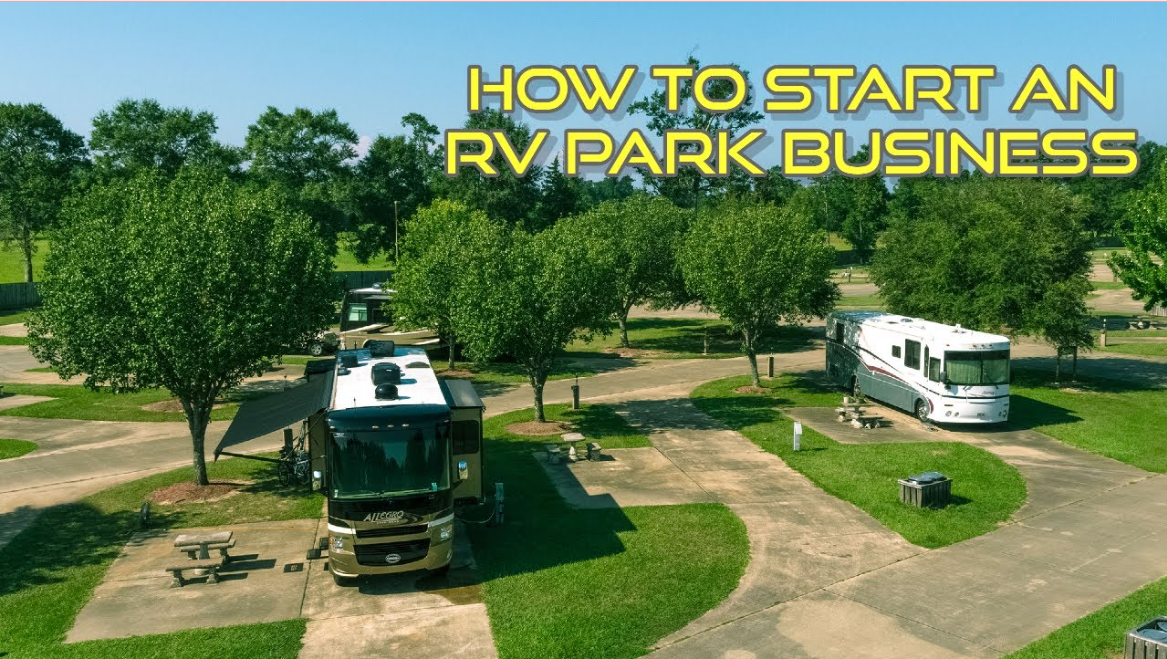
RV parks are comfortable places for people with recreational vehicles and trailers to spend the night. Starting your own RV park can be a great business if you want to bring more tourists to your area and make money. First, find an area to start your park and start designing how you want it to be laid out. When you finish building the park, make sure to provide the best experience and customer service for your guests. As you start to grow, run ads and directories so you can continue to reach new customers!

1. Designing an RV Park
Look for a plot of land of at least 3 acres (1.2 hectares). Try to find a location that is private and away from noisy roads or highways so you can create a comfortable experience for your campers. Look for an area that has other attractions nearby, such as hiking trails, lakes, or beaches, as they may attract more campers. Make sure the plot has level ground, otherwise you will have to flatten it.[1]
The minimum required size of an RV park depends on where you live. Check your area’s building or zoning codes to find out about these requirements or regulations.
Make sure that getting in and out of your park is not too difficult as some campers only need to stay 1 night at a time.
2. Divide the land into lots that are at least 1,500 square feet (140 m2).
Basic RV campsites are usually at least 25 feet (7.6 m) wide and about 27–35 feet (8.2–10.7 m) long so that RVs can easily fit into them. Start planning where you want to place the sites on your land map or blueprint. The number of campsites you can place in your RV park depends on the shape and layout of the land you purchase.
An RV park typically costs about $15,000-20,000 USD per campsite to build.
Choose some sites that are about 50-60 feet (15-18 meters) long so you can accommodate extra-long RVs or larger rigs.
3. Run water, sewer, and electric hookups at each campsite. Campsites that are connected to water, sewer and electricity make it more comfortable for your guests. Plan to place the hookups on the same side of the campsite as the driver’s side behind the RV so they can be easily attached to the lines. Have professional plumbers and electricians run the supply lines to each of your campsites to ensure this is done correctly and efficiently.
RVs typically require an electrical line that runs 220-240V.
4. Install concrete or gravel pads to provide level areas for parking. A concrete or gravel pad ensures that RVs are parked on level ground. Make sure the pads are at least 10 feet (3.0 m) wide and about 25-30 feet (7.6-9.1 m) long to hold the entire RV. Have someone pour the concrete or pack the gravel down for you at each site.[4]
Avoid using dirt as it can easily become muddy and dirty the RVs.
5. Build roads 25–30 feet (7.6–9.1 m) wide to improve traffic flow. Make sure the roads are wide enough to accommodate larger vehicles. Plan to use asphalt, concrete or packed gravel for your roads to keep them clean and easy to drive. Make sure roads allow campers to access each campsite without hassle or concern.
Try to use one-way streets so that you can easily direct the flow of traffic without causing congestion.
If you don’t know how to design roads or sites yourself, contact other RV park designers to help you.
6. Provide sanitary facilities if campers do not wish to use hookups. Find a place on your land where you can set up public bathrooms and showers so campers have the option to use them. Aim for 1-2 separate bathroom buildings and place them in a central location so they are easily accessible. Make sure your park also has access to a sewer or septic tank where RVers can empty their wastewater.
You may also want to add laundry machines near your sanitary facilities since you will already have plumbing in that area.
If you want to create a friendly gathering place, provide a clubhouse. Many RV parks have a small clubhouse area with tables, books or a full kitchen where RVers can socialize and get out of their vehicle. Place the building in a central location in your RV park so that all campsites can easily access it.
If you want to make the RV park family-friendly, have a restaurant or diner. If you want something for an adult group, consider putting on a bar.
Add a pool or fitness center to make your park more desirable. Many top-rated RV parks offer extra amenities to help their guests have the best stay. Choose a location in your RV park where each site has easy access to your pool or fitness center. If you choose to provide a fitness center, choose a variety of equipment.
7.If you want to create a friendly gathering place, provide a clubhouse.
Many RV parks have a small clubhouse area with tables, books or a full kitchen where RVers can socialize and get out of their vehicle. Place the building in a central location in your RV park so that all campsites can easily access it.
If you want to make the RV park family friendly, have a restaurant or diner. If you want something for an adult group, consider putting on a bar.
Add a pool or fitness center to make your park more desirable. Many top-rated RV parks offer extra amenities to help their guests have the best stay. Choose a location in your RV park where each site has easy access to your pool or fitness center. If you choose to provide a fitness center, choose a variety of equipment so your guests have options to choose from. If you choose a pool, make sure there are different depths so people can enjoy swimming or wading.
8. You don’t have to have a pool or fitness center in your park if you don’t want one.
Save 10% of your land to leave as open space. Open green space is a great way to make your guests feel comfortable while in your park. Use an open area to create a park, playground, or relaxing space where your guests can spend time outside of their RVs. Try to spread open spaces throughout the park so that all your guests can easily reach them.[9]
Depending on the guests you want to attract, you can change what you add to the open space. If you want something more family-friendly, try putting on a playground. If you want something for a more mature group, you can add something like a green or nature trail.
Part 2
Manage your park
1.Hire friendly staff to maintain sites and facilities.
Look for someone with good organizational skills and customer service to help guests make reservations and check in. Hire 1-2 groundskeepers to mow lawns, maintain campsites and clean other facilities. Try to have a plumber or electrician stay on site to help with hookup problems or concerns as well.
Make sure everyone working at your park follows the same procedures and customer service levels so campers are more likely to stay.
As your business grows, you may need to hire more staff to accommodate new customers.
2. Adjust your park prices for peak season and off-season.
Each location has a peak season, which occurs during the summer months, and an off-season, which usually occurs in the winter. Charge more during your peak seasons when you have the most traffic and less in the off-season because there won’t be as much competition for sites. Just make sure to charge enough so you can still make a profit from your visitors.[11]
Daily RV park rates typically range from $90–120 USD during peak seasons and $60–80 USD for off-season.
If your business is consistent throughout the year, you may not need to adjust your prices.
3. Post park rules clearly so your guests can easily find them.
Provide brochures or handouts during check-in so your guests can easily see the rules as they arrive at your park. Post signs throughout your park in common areas and periodically between campsites as a reminder to your guests. Make sure you or your staff enforce these rules if someone breaks them.
Some example rules might be, “No loud noises between 9pm and 8pm” or, “Clean up immediately after your pet.”
Don’t post your rules around your park too often because they can seem too strict.
4. Open a market to sell general necessities to your guests.
Since RVers spend a lot of time on the road, they may need to get more supplies when they stop at your park. Sell items like kitchen supplies, emergency kits, toilet paper, and jumper cables so your guests can pick them up as needed. If you want to help spread the word about your park, you can also sell things like t-shirts or bags with your park’s name on them.Plan how much inventory you buy based on how many guests your park typically has. That way, you won’t have extra items that are difficult to sell.
5. Provide Wi-Fi to your guests to make your RV park more attractive. Many RVers want to connect to the Internet when they stay overnight, so set up a wireless network that you can use throughout the park. Test the connection to all campsites to make sure it is fully compatible.[14]
Talk to an internet provider or technician if you don’t know how to set up a Wi-Fi system yourself.
If Wi-Fi doesn’t reach every campsite, you can list sites that aren’t connected to the Internet for a cheaper price.
6. Ask visitors for feedback on what you can improve.
Have a comment card or an area where your guests can write about their stay. Ask them to rate their stay and leave a note about what they liked or disliked about the park. Take every comment seriously and try to address people’s concerns so you can improve your RV park.
For example, you might ask, “What did you enjoy about your stay?” Or, “Are there things we can improve on?”
- Create a website for your RV park so people can find it easily. Post all your park information online, such as your rates, amenities and site size, so campers can easily determine if they want to stay there. Add maps and photos to give your potential customers an idea. Make sure there is a section for contact information and reservations as well.[15]
You can also list the sites and attractions that are close to the RV park as more incentive for guests to stay with you.
Check out other RV park websites to get an idea of how to set up your site.
2. Create social media pages to promote your park.
Post regularly to sites like Facebook, Twitter, or YouTube to showcase your park. If you want to appear more authentic, try engaging the community by asking questions, holding contests, or participating in polls. Respond to any questions or comments people leave and encourage them to visit.[16]
For example, you could write a post that says, “Campsites are filling up fast for this Labor Day! Make your reservation now before it’s too late!” You can also add a photo or link to your park’s website.
3. Plan special events around the holidays to attract more campers.
Large events are a great way to get the community involved in your park and bring in new business. For example, you could have a fireworks display for Independence Day or a movie after a Halloween costume party. Try to plan events for each major holiday where you expect guests and advertise them on your website.
You can also plan small events on regular weekends to increase attendance at your park, such as movie screenings or picnics.
4. List your park in the campground directory to reach more people.
Campground directories are online and print publications that campers can access to find places to stay in the area. Submit your RV park information, which should include your rates, campsite size, number of sites, and amenities, to the online directory. Once you submit and the directory approves you, potential customers will see your park listed for your area.[18]
5. Attend RV trade shows and events near you to promote your business.
Go to any trade show that specializes in RVing and set up a booth space for your park. Bring brochures, contact information and photos of your RV park so people at the event can see what it has to offer. Network with people at the event so you can make connections with RVers and dealerships so they’re more likely to remember your park when they’re looking for places to stay.
You may need to purchase booth space at the event.
Suggestions
- Visit other RV parks and note your likes and dislikes. This way, you can get ideas on what to include in your park and know what to avoid.
- Always maintain friendly customer service for campers at your park so they are more likely to return.
- Requirements for RV parks will vary depending on where you live. Always check the rules before starting your park.
Warnings
- Check with your local government to see if you need any kind of permit for an RV park. Make sure you get all the proper permits to build your park and operate your business, or you could be fined.
The US outdoors is a wonderful place for camping. It can also make your American business dream come true. Learning how to start an RV park is a way to get outdoors, meet RVers from all over the country, and find your way to profit in a $9 billion industry.
2020 saw increased camping, and recreational vehicle sales and rentals nationwide. With more RVs on the road, an increasing number of Americans are turning to RV parks for lodging and recreation. The guide below can help you start your own campground business.
Whether it’s young adult #vanlifers, families introducing their kids to America’s natural wonders, or seniors enjoying their golden years, your family-friendly RV park will become a part of people’s road trip memories. More than 40 million Americans camped in 2015 alone, logging 587 million camping days. That’s an average of more than two weeks per camper.
Plus, RV park opportunities abound from coast to coast. Your RV park can focus on being close to national parks or monuments, state parks, other public lands, private attractions, or even urban areas. From Gen Z teenagers to Baby Boomers, millennial families to Gen Xers looking for a lifestyle change, camping is expected to continue to grow in popularity.
Knowing how to start a successful RV park depends on factors such as location, acreage, amenities and nearby attractions. You’ll also go over small business structures, zoning, licensing, and other local, state, or federal requirements.
Checklist for How to Start Your RV Park
- Create a business plan
- Choose your RV Park Store business structure.
- Determine your business expenses.
- Create a business name
- Register your business and open financial accounts.
- Buy supplies for your RV park business.
Market your RV park business.
1. Make a plan
Start with an RV park business plan and SMART goals to track progress. Even a few preparation pages will help you test and refine your big idea for the camper park of your dreams.
- Location: How big can you make it? What is your proximity to roads and major highways?
- Land Use Requirements: RV parks must comply with local, state and federal laws and regulations for everything from setbacks and utilities to open spaces and fire protection.
- Attractions and Activities: Will people mostly sleep before visiting nearby attractions? Or do you want your park to be a destination in itself, full of on-site activities and amenities?
- Franchise or Independent? Azad parks let you do things your way and get 100% profit. But franchises with Campgrounds of America (KOA) or other groups set you up with pre-made business plans and advertising.
- Seasonality: What different prices can you offer during high and low seasons? Or, are there times of the year that you may need to close for the season?
- Who is your market? A growing number of campers are millennials, and a growing number of generations are also looking for RV parks. Meeting their expectations for service, amenities and safety is key to building the reputation and popularity of your RV park.
2. Structure your RV business
Whether you want to operate an RV park or have ambitions to own and operate multiple properties, you’ll generally want to consider structuring your business as a corporation or limited liability company (LLC). Sole proprietorships and general partnerships are technically entity options as well, but as a business, your RV park may benefit more from the taxation and liability protection available with an LLC or corporation.
Starting an LLC can be a solid business foundation. Although there will be some setup work, initial filing fees, and annual fees, it is less complicated and less expensive than a corporation. You can also have more flexibility in how the company is structured and run, and the operating agreement can guide partners and managers on day-to-day operations. Also, if down the road you decide that a different structure is better for the business, you can convert the LLC to a corporation.
Learn about different business structures here.
3. Determine your RV business expenses.
Real estate purchases, excavation, construction, landscaping, zoning, utility installation, and inspections are just a few of the costs you’ll factor into your business plan and financing.
To give you an idea, franchises like KOA break down their requirements for franchisees, such as:
- Minimum liquid assets of $500,000
- Minimum 10 usable acres of land (already purchased)
- Minimum rental inventory of 90 total sites, including 75 RV sites
- $1,800,000 – $2,250,000 Average Cost
- Try to estimate the total cost per campsite, typically $15,000 to $50,000, with 10 RV-ready sites per acre.
Your non-equipment costs may include:
- Land acquisition, zoning applications, and environmental impact studies
- allows
- Business license, setting up your LLC, filing fees, and quarterly/annual taxes
- Franchise Fees
- Market survey of the surrounding area
- Landscaping
How do you fund your startup costs?
Government assistance can be easier than a bank loan. Lenders from the United States Department of Agriculture (USDA) and Small Business Administration (SBA) may have more experience with the RV and recreation industry, and this insight may make them more open to your proposal. With SBA 7(a) loans, you can borrow up to $5 million toward the purchase of land, new construction, and the purchase of equipment, technical equipment, furniture, and/or machinery.
However, commercial lenders and private investors may be willing to fund your start-up costs as well. Finally, consider opening a business credit card to build company credit, collect rewards, and spread payments for purchases.
4. Creating a business name
Glacier Meadow RV Park and Campground. Compass RV Resort. Snowy Peaks RV Park and Rentals. The name of your RV park can tell customers what you offer and entice them with hints about the mobile camping experience that awaits them.
However, coming up with a name requires due diligence. Your RV park name must be easy to understand, and cannot be used by another business. As you generate name ideas, check their availability with your state’s Secretary of State website, domain registrars and business databases on social networks.
You can also add a “business as” name, or DBA, to your LLC or corporate filing. This way your business can have an official name behind the scenes as well as a more marketable name that the public knows.
5. Register your RV business and open bank accounts.
Once you’ve decided on your business structure, file your corporation or LLC with your state (with any DBA), and see what other licenses or permits your area requires. Your business will also need its unique Employer Identification Number (EIN).
Land use requirements will vary by state, county and municipality. Also, get to know the inspectors and other officials in charge of zoning and licensing, and be diligent about meeting the requirements during the construction and startup process of your RV park.
RV parks have different insurance requirements, depending on factors such as insurance laws in your area, the size of the park, what types of amenities you offer, and payroll. Consider working with an insurance agent to get the right coverage for your RV park.
Also open the right business bank account. From checking to credit cards, you’ll be able to better track cash flow and understand the financial health of your business.
6. Get the right equipment.
RV parks require a variety of equipment, which may include:
- Toiletries
- Cleaning and janitorial supplies
- Service vehicles (such as golf carts or pickup trucks)
- Utility hardware for electric, water, and sewer hookups
- Recreational amenities such as grills, picnic tables, and sports equipment
- Wildlife resistant waste containers
- Wi-Fi Internet Hardware
- Indications
- Fee collection stations

Also make sure your on-site personnel have the tools and equipment they need, such as hand and power tools as well as computers and mobile devices to process payments, review registrations, and check-in.
7. Marketing your RV park
Whether it’s specials posted on Facebook, video tours on YouTube, doodle-worthy destination photos on Pinterest, or everyday snapshots on Instagram, social media can help spread the word and generate buzz about your RV park. can do.
Also check out online directories like Google My Business. Claim and improve your RV park profile so potential customers have a better chance of finding your business when they’re researching RV parks in your area.
A park brochure, an ad in a tourist brochure, and other print materials can also be a great way to get your business in front of people’s minds.
Finally, you don’t need to spend hours creating a website and email marketing campaign, thanks to today’s prepackaged options.
America’s growing interest in camping is an opportunity for you to acquire skills, such as:
- Parks focus on a religion, social cause, or organization.
- Activity camps, such as boating, fly fishing, ATV/OHV driving, cooking, swimming, fitness, and sailing
- RV parks specialize in accessible amenities and sites.
- Certain demographics, such as senior citizens or families with minor children
- “Glamping” or luxury camping
An RV park will take land, investment and labor, but the opportunities for a profitable, successful business are there. As you plan and build your RV park, you can turn your dreams into reality, all while enjoying the best the outdoors has to offer.
How to Start My Own RV Camping Park
According to Business Wire, there are 75 million households in the U.S. that go camping on a regular basis. The campgrounds have seen a steady increase in attendance since 2014. There are many possible reasons for the revival of national interest in camping, but ultimately it doesn’t matter – people are flocking to RV camping parks. Keeping a few steps in mind means you can open up your own and help people achieve their outdoor dreams.
Buy or build
First, decide where you want to locate the RV camping park. You may live there for many years, so choose a geographic area that you are familiar with and enjoy. For example, you might not want to open an RV camping park in Maine if you’ve never seen snow. Now, buying an existing RV camping park is definitely easier and possibly cheaper. Building your own means you need to prepare each RV area at a cost of $20,000 per rental space, which adds up quickly. You will need to consider water hookups, waste disposal and electricity.
Make it all legal
Your new venture needs a lot of paperwork to make sure you’re operating on a legal basis. First, you need to set yourself up as a business entity, most likely as an LLC or a corporation. Both of these options give you some personal financial asset protection if your business runs into any legal issues. Also check the zoning regulations for your area to make sure you can operate commercially in your chosen area and file for the proper building permits.
Also, thoroughly research all regulations for operating within state guidelines for public water use, wastewater disposal, sewer, incineration, and utility use and that you maintain proper licensing. are You should consider business insurance as a means of protecting yourself in the event of a loss or liability situation.
Pick your shtick.
While it’s not necessary, it’s a good idea to think carefully about whether you want your RV camping park to attract attention. For example, some parks cater to business retreats, while others lean toward creating camps that appeal to groups of children. Thinking about it not only helps you inspire, but also shows you more ways you can market to your target audience. It’s not that your park can only be used by those groups, but that the park is designed with them in mind, from amenities to advertising.
Advertising and Marketing
Some companies out there specialize in promoting RV camping parks, and these are worth looking for. It used to be enough to have your name in the camping guides, but with social media and a much wider market, it’s important to diversify your approach as well as target your markets to keep your park full. If you want to try marketing your RV camping park yourself, that’s also doable. Join the National Association of RV Parks and Campgrounds to get listed. Create a social media presence with beautiful photos of your park and its amenities. Definitely consider hiring someone to create a fully responsive website that enables people to reserve a camping spot.
The great outdoors becomes a great place with people who are passionate about open skies and being outdoors in nature. Sharing the opportunity to live in your RV camping park allows others to share in the passion. If you like fresh air and business opportunities, this is the right choice for you.
Activities for Small Town Businesses for Easter
Because of their relatively small geographic area, small towns can have residents who become cramped. Instead of the impersonal feel of a big city, a small town can provide a sense of inclusion and belonging. If your business is in a small town, one of the best ways to increase your bottom line is to take advantage of that fact and emphasize your part in the community. Activities you include or sponsor at Easter may not lead to direct sales that day, but the goodwill and sense of community you create can boost your bottom line for months to come.
Easter egg hunt
Contact the city and make arrangements to use a local park for a sponsored Easter egg hunt. Buy plastic eggs and fill them with candy and prize tickets, such as coupons for your business. Advertise the Easter egg hunt at least two months in advance, spreading the word in schools, libraries and parks. Keep your branding low-key so you don’t come off as mercenary. The simple fact that you organized a fun activity for the town’s children is enough advertising.
Easter Bunny
Rent a high-quality Easter Bunny costume and have a competent person in it for the day. Depending on your business, you may want the rabbit to stand on the street corner or stay inside while interacting with customers. Have a comfortable easy chair in a bright corner
Decorate the park.
Easter means spring time and spring is when flowers begin to bloom. Contribute to the entire community by sponsoring an Easter Flower Gardening Day at a local park. Buy flats of bright flowers and encourage local residents to join the labor of gardening. Reward your gardeners with business coupons to further promote your business.
Free food
If you have a restaurant that is normally closed on holidays, open it up on Easter and offer free food to anyone who wants or needs it. Whether they’re homeless, can’t afford extra special meals or are alone on vacation, many people will gratefully take advantage of your offer. You may not get much business from your diners on Easter, but the good will that is generated will spread throughout town and give you a warm feeling of helping others. If your business is not a restaurant, consider teaming up with local eateries to split the costs and benefits of the event.
How to Open an Indoor Skate Park
According to the geography and travel website World Atlas, skateboarding is one of the fastest-growing sports in the world, with an estimated 11 million participants and a market value of US$4.8 billion. In fact, it’s so popular that skateboarding was slated to be included in the 2020 Tokyo Summer Olympics. With such an increase in participation, skateboarding enthusiasts may consider opening an indoor skate park to capitalize on the growing popularity of the sport.
Research the indoor skate park market.
Canvass the area, and look for an area that needs a skate park that has a lot of skateboarders living with some places to skate. Visit the nearest skateparks, and see how they work, how big they are and how much they charge. Look for ways you can cater to a need, be unique or provide better service.

Find your location.
An indoor skateboard park should be in a large building, with used warehouses being a particularly important location due to their size. You’ll need at least 500 square feet, though the more space you have, the more skateboarding activities your business can boast. In addition to size, you want a smooth concrete building if possible, so you don’t have to redo the floor.
